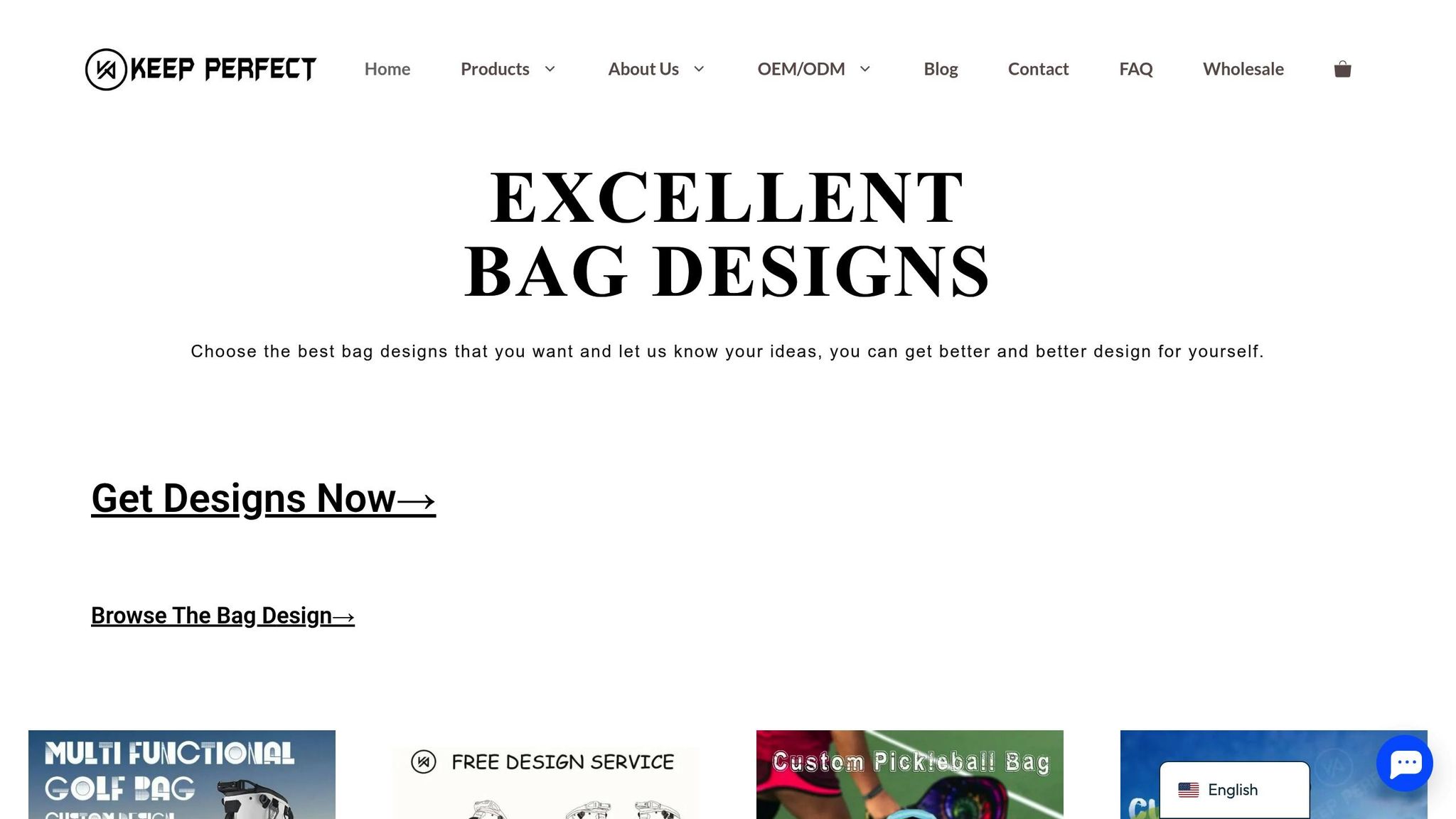When sourcing sports bags, you’ll face two main manufacturing options: OEM (Original Equipment Manufacturer) e ODM (Original Design Manufacturer). The choice impacts your costs, timelines, and product uniqueness. Here’s a quick breakdown:
- OEM: You create the design, and the manufacturer produces it. This offers full customization but requires higher costs, longer timelines, and higher order quantities.
- ODM: The manufacturer provides pre-designed products you can customize slightly (e.g., logo, colors). It’s faster, cheaper, and has lower order requirements but limits uniqueness.
Key Takeaways:
- OEM: Ideal for unique designs and premium branding. Costs are higher, with lead times of 12–20 weeks and order minimums of 1,000–5,000 units.
- ODM: Best for quick market entry and lower budgets. Lead times are 4–8 weeks, with order minimums of 100–500 units.
Quick Comparison:
| Factor | OEM | ODM |
|---|---|---|
| Design Ownership | Full rights | Shared with others |
| Customization | Complete control | Limited to small tweaks |
| Costs | $5,000–$15,000 upfront | $500–$2,000 upfront |
| Lead Time | 12–20 weeks | 4–8 weeks |
| Order Minimum | 1,000–5,000 units | 100–500 units |
Choose OEM for long-term differentiation or ODM for quick, cost-effective launches. Both models have their place depending on your goals, budget, and timeline.
Chinese ODM vs OEM: 5 Key Differences for Your Business
OEM Model: Full Customization with Longer Lead Times
The OEM (Original Equipment Manufacturer) approach offers complete control over both design and production, making it a great choice for retailers who want their products to stand out – though it does come with longer production timelines.
How OEM Manufacturing Works
The process starts with your design specifications. This includes everything from technical drawings and material choices to dimensions and specific features like hardware, compartments, and straps. Based on these details, the manufacturer sources materials and creates prototypes for your review. Once you’re satisfied with the prototype, custom tooling – such as molds or cutting dies – is developed specifically for your product. Throughout this process, close collaboration with the manufacturer’s engineering team is essential to ensure your standards are met.
Refining the prototype often requires multiple rounds of adjustments, such as tweaking pocket placements or strap lengths. These revisions can delay the start of full production, and the detailed nature of this process inevitably impacts production costs.
OEM Costs and Pricing
OEM manufacturing comes with higher upfront costs. Sample fees reflect the complexity of your design, as well as material, labor, and engineering expenses. Custom tooling, like molds or specialized fixtures, adds another layer of expense. Additionally, OEM production typically requires higher minimum order quantities. While larger orders can lower the per-unit cost, sourcing materials to meet your exact design specifications may drive up costs compared to using standard materials. However, premium components can help set your product apart in the market, potentially justifying the higher investment.
OEM Production Timelines
OEM production naturally takes more time. It begins with prototype development, which involves creating, testing, and revising samples until they meet your expectations. Meanwhile, custom tooling and material procurement often happen in parallel but can still add to the timeline. Once the prototype is finalized, the manufacturer schedules production, dedicating specific time slots to your order. From the initial design to the delivery of finished products, the entire process can stretch over several months. While rush production may be an option (usually at an extra cost), high-demand periods can cause further delays. Planning your inventory needs well ahead of time is crucial to avoid disruptions.
ODM Model: Lower Costs and Faster Production
The ODM (Original Design Manufacturer) model offers a practical alternative by utilizing existing designs, making it a quicker and more cost-effective way to bring products to market. However, this approach comes with limited control over design customization.
How ODM Manufacturing Works
In an ODM setup, you choose from a catalog of pre-designed sports bags that the manufacturer has already created. These designs are ready to go, complete with well-defined specifications, materials, and construction methods. The hard work – like engineering, testing, and refining – has already been done. Your role is to add your branding touch, such as a logo, specific color options, or fabric choices within the design’s established framework.
Since tooling, suppliers, and production processes are already in place, you’re essentially licensing an existing product and tailoring it to your brand. This setup eliminates the need for extensive engineering or prototype testing, as any design issues were addressed during the original product development.
Your customization options are limited to minor adjustments, such as logo placement or color changes. These predefined processes help streamline production while keeping costs and timelines in check.
ODM Cost Savings
One of the biggest advantages of ODM is cost efficiency. Unlike OEM (Original Equipment Manufacturer) models, which involve higher costs and longer development times, ODM simplifies the process and reduces financial risks.
- Lower sample fees: Since you’re working with pre-existing designs, there’s no need for extensive prototyping.
- Shared tooling costs: You avoid the expense of creating custom molds or fixtures, as these are already in use.
- Lower minimum order quantities: Shared production runs allow manufacturers to produce smaller orders while still benefiting from economies of scale.
- Predictable material costs: Manufacturers buy standard materials in bulk, thanks to established supplier relationships. This results in better pricing, which is passed on to you.
- Reduced development expenses: You’re paying for manufacturing rather than research and development, which keeps per-unit costs more competitive.
By eliminating the need for custom engineering, prototype iterations, and extensive consultations, ODM helps reduce upfront investment and ongoing production costs.
ODM Production Timelines
ODM manufacturing doesn’t just save money – it also speeds up production. Since the design phase is already complete, production can begin much sooner. Sample creation takes just a few days, and production integrates seamlessly with existing manufacturing processes.
Manufacturers don’t need to source new materials or wait for custom components, which eliminates many of the delays typically associated with product development. Additionally, ODM orders can often be combined with other clients’ production runs, further improving efficiency and reducing setup times.
From the moment you confirm your order, production timelines typically range from 4 to 8 weeks, far shorter than the months required for OEM projects. This quick turnaround makes ODM an appealing choice for businesses that need to respond swiftly to market trends or seasonal demands.
Even rush orders are more manageable with ODM, thanks to standardized production processes. Without the need for custom tooling or specialized materials, manufacturers can often accommodate expedited requests with minimal hassle.
sbb-itb-1e6451b
OEM vs ODM Comparison for Sports Bags
When deciding between OEM and ODM manufacturing for sports bags, it’s essential to weigh the pros and cons of each model. Both approaches impact your design control, costs, and production strategy in distinct ways.
Main Comparison Points
Here’s a breakdown of the major differences between OEM and ODM, focusing on design ownership, customization, costs, lead times, and order quantities.
Design ownership is a standout distinction. With OEM, you retain full rights to your design, including legal protections, ensuring exclusivity. In contrast, ODM involves using pre-existing designs, which may also be available to other brands.
Customization options are another key factor. OEM offers full creative freedom, allowing you to tailor every detail of the product. ODM, however, limits changes to simpler elements like logos, colors, and minor design tweaks.
Cost considerations differ significantly. OEM requires a higher upfront investment for design development, tooling, and prototypes, but it often results in better margins for large-scale production. ODM, on the other hand, has lower initial costs since development expenses are shared across multiple clients, though per-unit costs may rise over time.
Minimum order quantities (MOQs) also vary. OEM manufacturers typically require larger orders – ranging from 1,000 to 5,000 units per style – to cover the setup and tooling costs. ODM orders start smaller, often between 100 and 500 units, as production is shared among multiple clients.
These factors influence not only your production costs and timelines but also how you position your brand in the market.
OEM vs ODM Comparison Table
| Factor | OEM Model | ODM Model |
|---|---|---|
| Design Ownership | Full ownership with legal protection | Licensed design, shared with others |
| Customization Level | Complete control over all specifications | Limited to logos, colors, and minor tweaks |
| Initial Investment | $5,000–$15,000 for development and tooling | $500–$2,000 for samples and setup |
| Lead Time | 12–20 weeks from design to production | 4–8 weeks from order to delivery |
| Minimum Order Qty | 1,000–5,000 units per style | 100–500 units per style |
| Unit Cost | Higher upfront, decreases with volume | Lower upfront, may increase with volume |
| Market Exclusivity | Unique product positioning | Shared designs with competitors |
| Risk Level | Higher due to custom development | Lower due to proven designs |
| Flexibility for Changes | Full control over modifications | Limited to pre-approved variations |
| Time to Market | Longer due to development phase | Faster market entry |
Strategic Use of OEM and ODM
Many successful retailers combine both models to maximize their market reach. For instance, fast-fashion sports brands often turn to ODM for quick seasonal launches and trend-based items. Meanwhile, premium athletic brands lean on OEM to create signature products that set them apart in the market.
OEM is ideal for brands aiming to scale, as the upfront costs are offset by economies of scale in large production runs. ODM, however, is a smart choice for testing new markets or adding niche products without heavy financial risks. By understanding these differences, you can choose the approach that aligns best with your business goals.
How to Choose Between OEM and ODM
Selecting the right manufacturing model – OEM or ODM – depends on factors like costs, timelines, and your long-term business goals. This decision impacts everything from how your brand is perceived to how you manage cash flow.
Factors to Consider When Deciding
Budget Considerations: If you’re working with limited funds, ODM might be the way to go. It requires less upfront investment, making it a safer option for testing the market. On the other hand, OEM demands a higher initial budget but offers the chance to create unique products that can support premium branding.
Brand Identity: Think about how you want your brand to be perceived. If exclusivity and custom design are central to your strategy, OEM’s customization options can help you stand out. If your focus is on affordability and quick market entry, ODM’s ready-made designs might be a better fit.
Time Constraints: Speed matters, especially if you’re racing to meet seasonal demand or launch deadlines. ODM generally delivers faster since the designs are pre-made. In contrast, OEM takes longer because of the time needed for design and customization.
Market Competition: In crowded markets, ODM’s cost efficiency can be a strong advantage. However, if your product needs to stand out with unique features or materials, OEM’s customization options can give you an edge.
Future Growth Plans: Your long-term strategy plays a big role. Many businesses start with ODM to quickly enter the market and later switch to OEM as they grow and aim for more innovative, differentiated products. Additionally, consider your order volume – OEM is better for large-scale production, while ODM suits smaller orders.
JUNYUAN BAGS offers tailored solutions for both OEM and ODM, making it easier to align your decision with your business goals.
Como SACOS DE JUNYUAN Supports OEM and ODM Needs

JUNYUAN BAGS simplifies the manufacturing process for U.S. retailers by offering strong support for both OEM and ODM models. One standout feature is their free design services, which eliminate a major hurdle in OEM manufacturing by providing professional design assistance at no extra cost.
Their dual manufacturing approach lets you mix and match strategies. For example, you could use OEM for a signature sports bag line with unique designs and ODM for seasonal or accessory items to save on costs.
Both their OEM and ODM processes meet rigorous certifications like BSCI, CE, RoHS, and ISO9001, ensuring compliance with U.S. standards and easing the challenges of international production.
JUNYUAN BAGS also excels in flexibility. They can adjust product specifications to meet U.S. size and durability standards, whether you need custom dimensions or specific materials. Their sample creation process is straightforward, with clear timelines and revision options, so you can confidently approve designs before full production begins.
To top it off, their expertise in global shipping and U.S. import regulations ensures a smooth process for getting your products to market, no matter the size of your order.
OEM vs ODM: Choosing the Right Sports Bag Manufacturing Model
When it comes to manufacturing sports bags, picking between OEM and ODM models isn’t just about crunching numbers – it’s about aligning your production approach with your business strategy. Each model brings unique advantages that can shape your brand’s presence in the U.S. market.
The choice often boils down to balancing cost, customization, and scalability. ODM manufacturing is ideal for businesses seeking cost-effective, standardized production with faster turnaround times. This model is especially appealing for smaller retailers or companies looking to respond quickly to market trends, thanks to its lower minimum order requirements. On the other hand, OEM manufacturing involves a higher upfront investment but allows for unparalleled customization, enabling brands to design signature products that stand out. While OEM requires more planning and resources, it’s a long-term strategy that can drive brand differentiation and profitability for established businesses with larger production needs.
JUNYUAN BAGS caters to both models, offering free design assistance, key international certifications, and flexible product specifications tailored for the U.S. market. Whether you’re launching your first sports bag collection or scaling up an existing line, their support simplifies the process and helps you bring your vision to life.
Ultimately, the right choice depends on your business’s current stage and long-term goals.
FAQs
What should retailers consider when deciding between OEM and ODM for sports bags?
When deciding between OEM (Original Equipment Manufacturer) e ODM (Original Design Manufacturer) for sports bags, there are a few important factors to weigh:
- Design Control: If you want complete freedom to create unique and customized designs, OEM is the way to go. On the other hand, ODM provides pre-designed products with limited customization options, making it a quicker choice for those who don’t need a fully original design.
- Budget and Investment: OEM typically demands a larger upfront investment to cover design and development costs. ODM, however, can be a more affordable option, especially for businesses working with tighter budgets.
- Lead Time: ODM usually offers faster production timelines since the designs are already established. In contrast, OEM projects may take longer because of the custom design and development process.
Ultimately, your choice should depend on your business goals, the level of customization you require, and how much time and budget you’re willing to invest.
What are the branding and market positioning differences between OEM and ODM sports bags?
Choosing between OEM (Original Equipment Manufacturer) and ODM (Original Design Manufacturer) models is a key decision that can shape how your sports bags are branded and positioned in the market.
With the OEM model, you get complete control over the design process. This means you can create products that are entirely unique and tailored to fit your brand’s identity. This level of customization not only helps you stand out but also allows you to build a strong market presence. Plus, offering something distinct often justifies premium pricing and strengthens customer loyalty.
In contrast, the ODM model provides ready-made designs that are quicker to produce and launch. This approach can save both time and money, making it an appealing choice for businesses working on tight schedules or budgets. However, the trade-off is that customization options are limited, which can make it harder to set your brand apart from competitors.
Ultimately, the choice between OEM and ODM depends on your specific goals, budget, and timeline. Each model has its advantages, so weighing these factors carefully is essential to making the right decision for your business.
Can a business effectively use both OEM and ODM models at the same time?
Businesses can successfully combine both OEM and ODM models to address various needs. For example, a retailer might partner with an OEM to create a fully tailored flagship product while simultaneously working with an ODM to supply ready-made or semi-customized accessories.
This strategy strikes a balance between cost-effectiveness e personalization, enabling businesses to meet diverse customer demands while staying adaptable in terms of production and timelines.




 Telemóvel/What's App/Wechat
Telemóvel/What's App/Wechat E-Mail
E-Mail ADD
ADD




